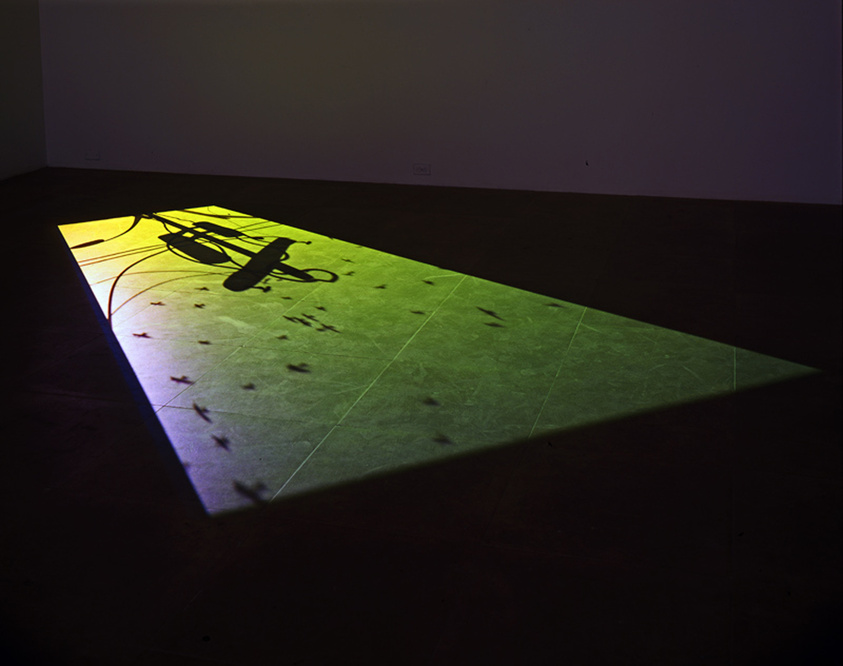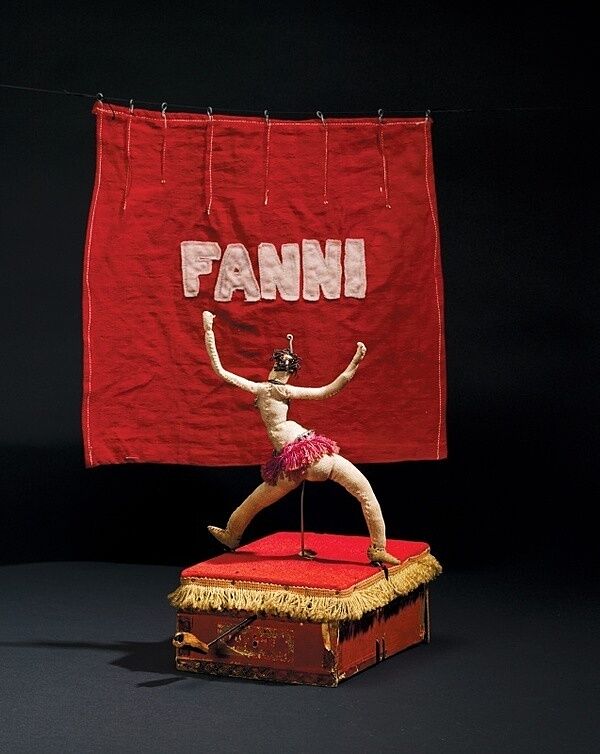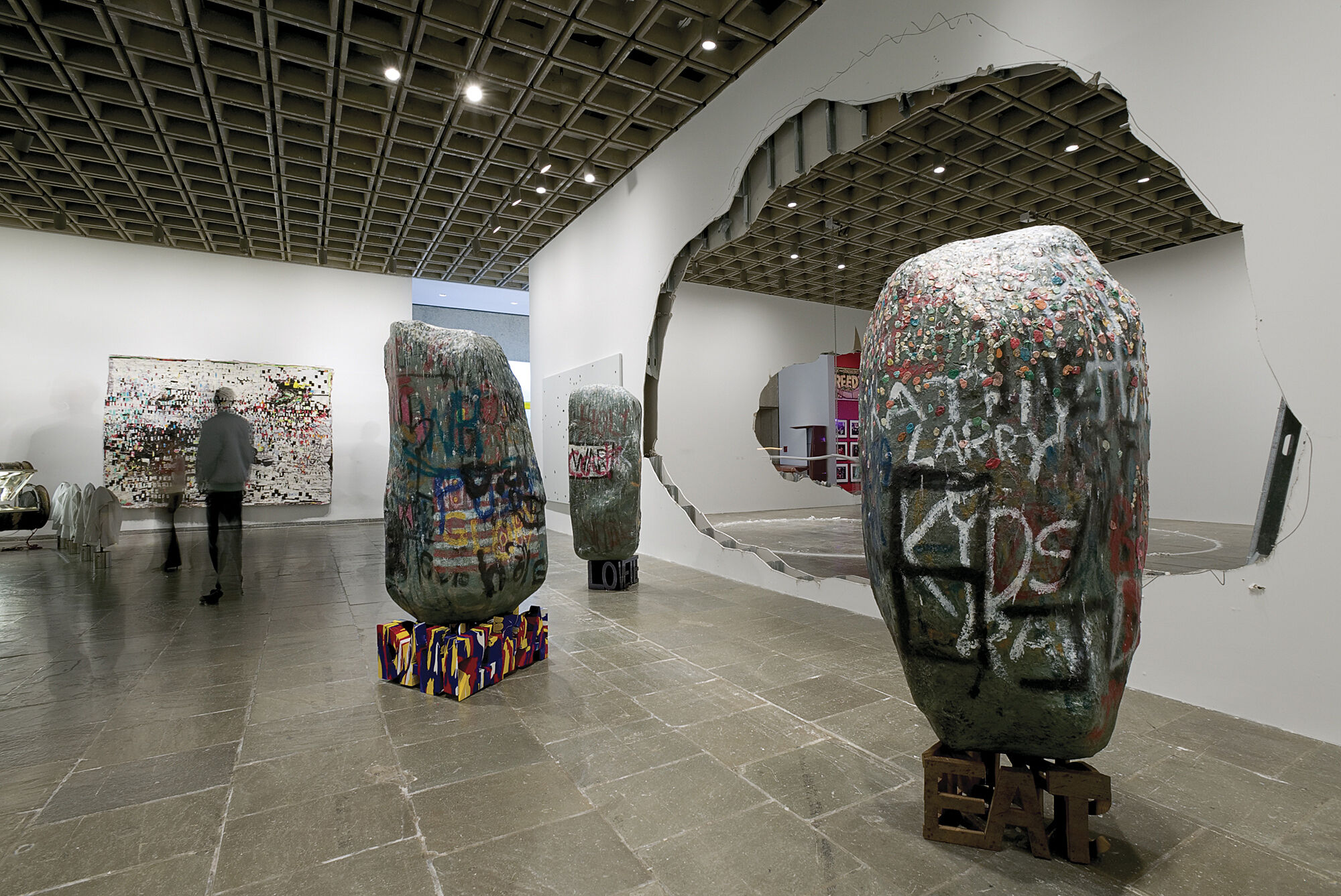Narrator: The artist Paul Chan.
Paul Chan: The whole piece functions with the idea that if you walk into the room, where this piece is, you’ll look on the floor to this, non-square of light, and think to yourself, at some point, where is the window? That there’s a window, somewhere in this room that’s casting light onto this floor.
Narrator: The work is on a fourteen-minute loop. For most of that time, you will see things floating upwards—a subway train, a bicycle, and an ipod, for example. But at some moments, there are human bodies falling down. For many, these figures recall the sight of tumbling victims from the World Trade Center attacks. They also perhaps suggest a tradition of apocalyptic images in western art. In Christian doctrine, the apocalypse is associated with the rapture, or the ascension of believers to heaven. Here we see humans fall to earth and it is our possessions—everyday objects—that rise upwards.
Paul Chan: You must be a fool to not see the era of the twenty-first century infused with a kind of religiosity, whether from Eastern or Western. This idea of a need for a kind of order that comes from high above us, right? So when people talk about it in terms of apocalypse, I think it’s not necessarily because of the piece, but because the air in which we live now. . .the language is there, and so we grab it. I’ve certainly been invested in looking into, or using, or even perhaps hallucinating, why it is that we’re reaching for this, higher order.




